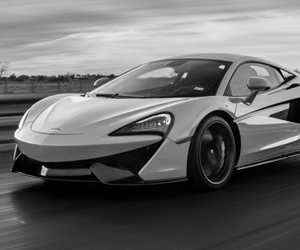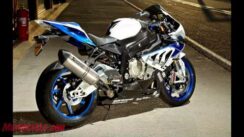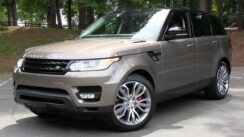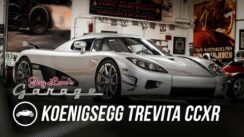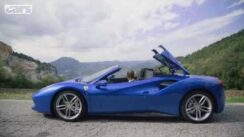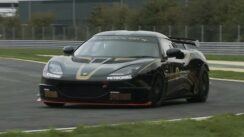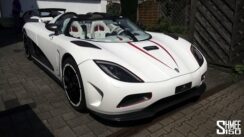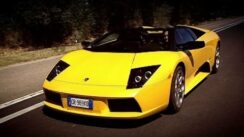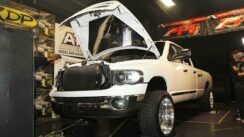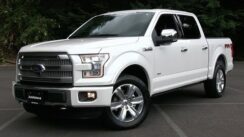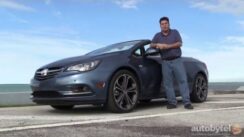The Exciting New Era of Super-SUVs

Just about a decade ago were people discussing how SUVs (Sports Utility Vehicles) started to be more than just a workhorse. The heightened driving position, plethora of space and generous ground clearance made SUVs a choice for soccer moms who were interested in ditching the family minivan but also for the garden-variety daily driver.
Nowadays, the sight of a sleek SUV is no longer something to catch your eye, especially in large metropolitan areas. There is, however, a new breed of behemoths that is making its way onto the market – the uber-expensive, luxury market to be precise: super SUVs (SSUV).
At first, the super SUVs weren’t more than a performance trim – remember Porsche Cayenne S? It didn’t take long for main automotive to brands to realize that there is an emerging market (initially in Europe, then all over the world) for more than just a trim – a powerful beast that matches the perks of a large SUV with the swiftness and sheer power of a supercar.
There isn’t a consensus on why someone would wish to take a 2-ton monster on a track rather than a smaller hot-hatch or sedan with similar power figures. However, there is no doubt that demand for super SUVs exist, and automakers have been quick to act.
Let’s have a look at today’s most prevalent super SUVs and what number they boast from beneath the large hood.
Porsche Cayenne Turbo S E-Hybrid – 541hp
Back in 2002 when Porsche showcased Cayenne, many purists turned their heads away while muttering words of disbelief. Why would the maker of the legendary 911 even think about a large, wobbly vehicle? Fast-forward almost a decade later and we can easily see how right Porsche was to act so early. Not only Cayenne was an absolute success as a luxury SUV, but its upcoming Cayenne Turbo, S and Turbo S were the pioneers of today’s super SUV market.
Let’s put it this way: at a 7,700lbs towing capacity, Porsche Cayenne Turbo S could easily tow any race car on a platform. However, with 541hp screaming out of the 4-liter twin-turbo V8, you might as well leave the race car in the paddock and race the tow vehicle.
Want some more numbers? The Cayenne Turbo S takes 3.5 seconds from standstill to 60 mph, 12.1 seconds to cross the quarter-mile at 115mph, the Pirelli P Zero Corsa PZC4 grip the tarmac even at 1g of lateral acceleration. And when you’ve had enough, the huge Brembo brakes will get you from 70mph to a standstill in just 150ft.
The crazy power numbers aren’t everything Porsche put in this super SUV. Alongside high numbers there is also a luxurious, stylish design. Well blending lines, leather upholstery, premium interior finishes and beautiful wheels – all make sure you drive boldly on the city streets after you’ve finished crushing lap times.
Jaguar F-Pace SVR – 550hp
Just as with Porsche, Jaguar went to be known in history of automotive as a luxury brand – the crown jewel of the Jaguar-Land Rover group. It seems though that gone are the days where Range Rover and Land Rover were sharing their SUV dominance. With three models (the F Pace, E-Pace and I-Pace), Jaguar made a bold statement a few years back. Not only by pushing its first SUV line to the market, but also by providing a monstrous power output to its range topping model – 550hp flowing to all 4 wheels from a 5-liter blown V8.
The risk taken by Jaguar brass by sharing a tall, large SUV to the market has been fruitful. Jaguar F-Pace made a name for itself with a neck-breaking design and full performance perks and became the brand’s best-selling model not later than a year after its launch.
Be reminded that Jaguar has a Special Operations Vehicle division – thanks to those guys, we got to see more of the F-Pace, with the range-topping SVR. There’s enough power under the hood to reap the race track and enough torque not only to put out some impressive acceleration times (4.1 seconds to 60mph) but to pull any small sized boat for your fishing trip.
Jaguar F-Pace SVR is, no doubt, a great super SUV. However, the icing on the cake is the preservation of style. Jaguar engineers and designers managed to put so much raw performance within an SUV without making it less imposing – not even slightly less. The F-Pace SVR shines just as you’d expect from any other car having the jumping feline on the hood.
Rolls-Rolls-Royce Cullinan – 563hp
Back in the day, Rolls-Royce meant royalty. Exquisite yet bolt and somber design where fancy gimmicks were quickly dismissed by an air of pure class. There was always something sumptuous about a Rolls-Royce, be it the Phantom, Ghost or Wraith. The shock came when the Dawn – a convertible Rolls-Royce was revealed to the public. A sudden break out of the strict design rules was witnessed at that time.
It didn’t take long for Rolls-Royce to realize how a boost of freedom would benefit the company. So, a year later, the world is presented with the Cullinan. A first of its kind Rolls-Royce SUV. Not only that it was tall and wide – the Cullinan brought performance on the front page of Rolls-Royce.
If previous models were advertised as having “adequate power”, the Cullinan shatters the trend with all its 563hp generated by the twin-turbo 6.7-liter V12 paired to an 8-speed automatic gearbox.
Unlike its other super SUV friends, the Cullinan remains the most elegant – after all it is still a Rolls-Royce. A great deal of effort was put into damping every unwanted sound to the point where you will require a stethoscope to hear the tires rolling or the engine roaring. You are basically sitting inside a soundproofed box with huge amounts of legroom both in front and in the rear, impeccable finishes and a ton of personalization perks. As Rolls-Royce says, each car is made for the buyer only. Overall, the Rolls-Royce Cullinan comes with a character that is rarely seen – it makes a statement; however, it also does so much more than that.
Maserati Levante Trofeo – 582hp
While news that Ferrari is working on its first crossover took the world by surprise, it is not likely that we’ll see a full-sized SUV featuring the prancing horse logo. On the other hand, you’d need to move just slightly aside on the map and get the current best alternative out there – Maserati Levante Trofeo.
So, why is this super SUV considered a Ferrari alternative? Well, first, the 3. 8-liter twin turbo V8 found beneath the hood of the Levante Trofeo is incredibly like what the Ferrari 488 provides. We’d venture as far as to say it is the very same engine since Ferrari assembles both, but without consistent proof, let’s limit to the similarities.
For a car that weighs over 2. 2 tons before adding passengers and their Louis Vuitton luggage, the Levante Super Trofeo goes from 0 to 60mph in roughly 4 seconds and tops out electronically at 190mph. These figures make the super SUV Maserati’s fastest production car ever. And yes, while the legendary MC12 was able to scream 638hp out of a naturally aspirated V12, it is not considered to be a series production car.
Featuring the Alfa Romeo Quadrifoglio drivetrain and a well thought out suspension, the Levante Trofeo places a strong challenge to the laws of gravity in its attempt to overtake sharp corners and accelerate quickly on the straights. In the end, there is no way not to smile or at least smirk when the Ferrari engine starts pushing noise out of the elegantly designed exhausts.
Bentley Bentayga Speed – 626hp
If so far we have discussed luxuriant elements dressed over a potent power unit, Bentley comes around the corner to change perspective. The Bentayga Speed is not just the brand’s first SUV, it is also a brute. Thankfully, this brute is not all about straight line speed, although it is pretty good at it. With a 626hp provided by a W16, 6-liter twin-turbocharged heart and 663 lb-ft of torque, Bentley advertises Bentayga Speed as the fastest SUV in the world. While the statement holds its ground, the difference might be hard to spot anywhere outside the race track.
The 48-volt Dynamic Ride Control system makes the best out of the anti-sway bars, making sure the tall SUV keeps all four wheels on the tarmac while taking sharp turns – the kind you’d expect a hot hatch to deal with, and not a two-ton monster. Alongside the electronic controls, the firmer, improved air suspension is due credit for the impressive to-the-limit dynamic behavior of the Bentayga Speed.
On the inside, Bentayga Speed catches the eye with beautifully laid leather upholstery that contrasts well against the carbon fiber dashboard, regardless of the chosen color scheme A great attention of detail was set upon small items on the dashboard and pretty much anything that the passengers may come in contact with.
Marketing the new Bentayga as just “Speed” massively undersells the broad improvements that Bentley engineers have done on the super SUV. It’s not all about the insane straight-line speed (190 mph) – it’s also about a brilliant weight transfer and suspension design, and an overall eye-opening behavior at the limit.
Lamborghini Urus – 641hp
If Ferrari is still pondering the idea of a large super SUV, Lamborghini already went ahead and provided the first supercar-badged SUV. It is important to remember that Lamborghini made the LM002 back in the 80s – the first off-road vehicle of the brand. Since it was bulky, shaped like a box and not really oriented for city traffic but rather for military purposes, the project was quickly dropped.
As we are all aware, aesthetics is not everything in the realm of high-performance numbers. Was Lamborghini able to inject some authentic supercar DNA into the Urus? It definitely appears so.
On the outside, the design of the Urus super SUV mixes nuances of Audi Q7, Q8, Bentley Bentayga and even Porsche Cayenne. While these are great genes to have, Lamborghini made sure to have their fingerprint well placed into the design. Thus, we are left with steeply angled and hooded body elements, making the Urus look and feel exotic – just like a proper Lamborghini.
Beneath the alien design lines there’s a 4-liter V8 that pushes out a generous 641 horsepower, allowing the Urus to reach 60mph in no longer than 3.2 seconds (that’s already supercar territory). The engine rumbles strongly at idle and gives chilling screams at the other end of the rpm gauge.
On the inside, there is the classic jet-fighter inspired design for the dashboard, with pretty much all the elements oriented towards the driver. One feature is the “Ego” button on the steering wheel, allowing the driver to tweak powertrain, suspension and steering settings – basically making the 2-ton Lamborghini behave to your likeness.
Jeep Grand Cherokee Trackhawk – 707hp
The first super SUV on the list to break the 700hp barrier, Jeep Grand Cherokee Trackhawk boasts the insanely powerful “hellcrate” 707hp V8 that comes on all Dodge’s Hellcat models. While it weighs 2.4-tons (about 10% more than the Lamborghini Urus), Grand Cherokee Trackhawk takes just 3. 5 seconds to reach 62mph and tops out at 189mph – on paper.
In reality, once you’ve strapped on tightly and heated the tires at the drag strip, a quick pedal and a properly set launch control will cause the Trackhawk to reach the lower range of 3 seconds to 60mph and make the 11-second quarter mile.
While powerful, all the extra pump comes with a penalty. The Jeep Grand Cherokee Trackhawk will generally ask for your full attention while driving – it’s hard to make the Hellcat engine give half-measures when trying to park in a tighter space, and the handling is no easier than you’d expect it to be.
On the other hand, like with most super SUVs on the list, the Jeep Grand Cherokee Trackhawk isn’t likely to be acquired as a daily driver. Rather than that, it is going to be the main way to drop the pedal to the metal at the local racing ring let people stare in amazement at a 2.2-ton beast basically chewing the asphalt at supercar speeds.
Aston Martin DBX – 542hp
As with some of the other manufactures on this list, the formula to boost sales is to add an SUV to the lineup. As customer demand for sport utility vehicles continues to rise, Aston Martin execs finally succumbed to the pressure to build their very first SUV. The Aston Martin DBX super SUV boasts the same Mercedes-AMG 4.0L V8 engine featured in the Vantage and DB11, which is good for 542 ponies.
Spiriting driving on twisty roads should be no problem for the DBX as it features a new “eARC” active anti-roll system. The system is said to be able to keep the supercar SUV nearly perfectly level in cornering. The DBX’s air suspension is standard which allows for the ride height to be raised or dropped for off-roading or loading/unloading cargo.
The DBX is sure to be a regular crowd pleaser with spot on Aston Martin looks inside and out, and the added capability that Aston Martin’s have never known. Yes, the DBX will likely win over the hearts of many buyers for years to come.
Tesla Model X P100D – 762hp
It takes something extremely special to beat the numbers put out by the TrackHawk. And fortunately, Tesla has just that: an electric powertrain capable of unleashing 762hp to all four wheels, making the Model X SUV accelerate to a degree where quite a sportscars might get jealous. It requires just 2.9 seconds to reach 60mph.
The speed tops out at around 155mph, and given the 5,070lb weight, it is surprising that the Model X can go so fast. On the bright side, the increased mass lets the regenerative braking system route more energy back to the 100KWh batteries. While on the straight line, Ludicrous mode makes everything feel exciting and getting people to scream “damn!”, corners are not forgiving for the Model X and its extra pounds.
For a day-to-day basis, the 542km range offered by the Model X in its highest trim takes the long charging time out of the equation. Unless you are really willing to see how far you can go on a low battery, you should have plenty of time to charge your Model X before going bankrupt, energy-wise.
Conclusion
Here they are! The most powerful super SUVs currently out there on the market. There is some serious power output hidden in the guts of these giants, and given the current trend, these are just the beginning of a long line.
In the upcoming months, we should get more details on the Audi E-Tron S (2020) BMW X5M (2020) and even a surprise appearance of a Bugatti badged SUV using Rimac electric technology to boost their figures. Even Ferrari chief Sergio Marchionne has confirmed that the Italian car maker will add a supercar SUV model to its lineup in the near future. Yes, the future of the SUV is a bright one.

































































































































































































































































































































































































